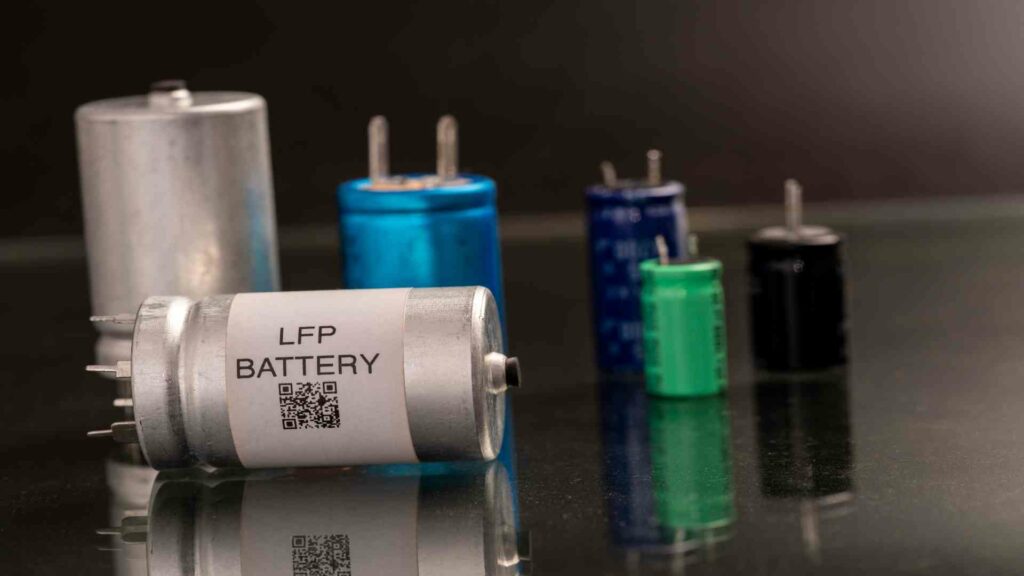Biden Administration Pushes For Critical Minerals Policy
As part of the Biden Administration’s National Defense Strategy, the administration released a memorandum today related to the clean energy economy to protect critical and strategic infrastructure supplies for clean energy transition including lithium, graphite, and manganese for large capacity batteries, as well as a sustainable supply of all critical and strategic minerals which includes boron.

Biden Administration
What is Strategic Mineral?
A strategic mineral is a mineral commodity that is critical to the economic and national security of a country but which is subject to supply disruptions or limited domestic production. These minerals are considered essential for key industries such as defense, technology, and infrastructure. Examples of strategic minerals include rare earth elements, cobalt, boron, and lithium.
Biden Administration Critical and Strategic mineral policy cites its over-reliance on “unreliable foreign sources for many of the strategic and critical materials necessary for the clean energy transition”, also the Biden administration memo declares its intention to “secure the supply of such materials through environmentally responsible domestic mining and processing; recycling and reuse; and recovery from unconventional and secondary sources, such as mine waste”.
Sustainable Mining
Biden administration policy specifically refers to “sustainable and responsible domestic mining, beneficiation, and value-added processing of strategic and critical materials for the production of large-capacity batteries for the automotive, e-mobility, and stationary storage sectors (are) essential to the national defense”.
Purchase Commitments
The document further commits the Biden administration to “purchase commitments” or other actions for expedient methods toward meeting the above-stated goals and to support feasibility studies for mining and value-adding processes to increase productivity in domestic mines.
Surveys and Expansion of Mining
The Biden administration memorandum also states its intention to survey and expand “sustainable and responsible domestic mining, beneficiation, and value-added processing of strategic and critical materials necessary for the production of large-capacity batteries for the automotive, e-mobility, and stationary storage sectors”.
Boron has not to date been added to the critical mineral list but certainly is considered a strategic mineral given its multiple applications in decarbonization and clean energy applications and solutions. Boron is present in EV batteries, in neodymium magnets which power wind turbines, for example, and boron nitride nanotubes offer clear benefits in harnessing and conducting power as a superconductive material in electronic circuitry as well as being essential for nuclear energy.
1. Boron Nitride Nanotubes
Boron Nitride Nanotubes are a relatively new material that is heavily under research in recent years. They are handy in creating both conductive and non-conductive materials, which is especially useful for companies that need different types of insulation or shielding. Boron nitride nanotubes have many advantages over other materials including high tensile strength, low thermal expansion coefficient, and high-temperature stability.
Boron Nitride Nanotubes are a topic of interest to the scientific community for decades. Their usage has a variety of applications in different industries, including but not limited to: photonics, electronics, and optics. One characteristic that sets them apart from other nanomaterials is their ability as excellent thermal conductors while still maintaining low electrical resistance. This makes boron nitride nanotubes attractive as heat sinks for electronic devices such as computers and cell phones.
2. Neodymium Magnets
A neodymium magnet or NdFeB, or Neo magnet, is the most widely used rare-earth magnet. It is constructed from neodymium, iron, and boron alloy to form the Nd2Fe14B crystalline structure. Magnetic properties of neodymium magnets depend on the alloy composition, microstructure, and manufacturing technique employed.
The magnet was first developed independently in 1984 by General Motors and Sumitomo Special Metals, forming the basis for commercialization as the most vital type of neodymium magnet available today
Neodymium is a magnetic metal with antiferromagnetic properties. Its magnetic properties appear at low temperatures below 19 K (−425.5 °F) in its purest form. However, some neodymium compounds with ‘transition metals,’ i.e., iron and ferromagnetic, have Curie temperatures well above room temperature. These compounds are used to make neodymium magnets.
Biden administration singled out the company’s Fort Cady facilities in California for its reserves to be included “in the interest of national security”.
5e Advanced Materials – formerly ABR – at Fort Cady Integrated Boron Facility has been designated as Critical Infrastructure by the Cybersecurity and Infrastructure Security Agency. The designation of ‘Critical status’ is a sign that the Biden administration considers Fort Cady and its reserves to be in the interest of national security.
The designation validates Fort Cady’s role in providing a new, critical, domestic source of boron amidst a challenged global supply chain. CISA, as a U.S. federal agency and operational component under the Department of Homeland Security, is tasked with understanding, managing, and reducing risk to the nation’s cyber and physical infrastructure.





